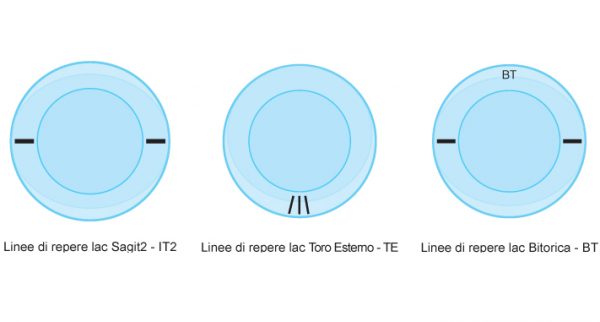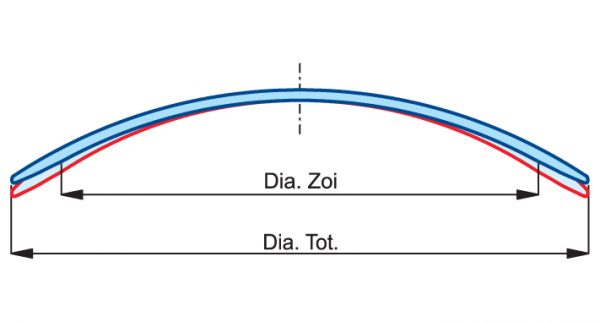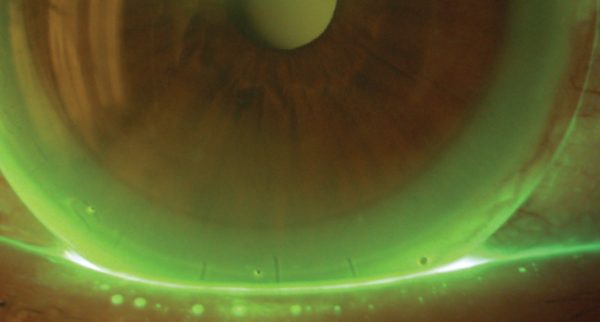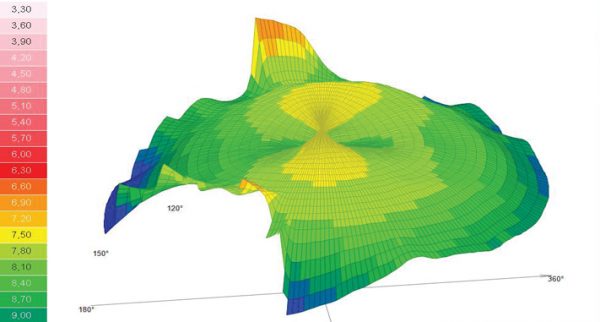toric rgp
The “Sagit2” design is ideal in cases of astigmatism higher than 1,75 diopters; the specific back toric geometry, fitted in the various profiles, has sagittal values differentiated in the two main meridians. To compensate for internal astigmatisms, or residual forms, the internal design must be associated with a front toricity.

repere lines
The lines engraved on the external surface are used to verify the positioning of the axis; each model of the toric range is marked by a specific tracing: in IT2 and BT (Bi-Toric) modules the retrieves indicate the flat radius of the lens, while in FT (Front Toric) the position of the cylinder.
back toric - it2
The SAGIT 2 module is associated with all spherical and aspherical geometries; back toric (IT2) is ideal for significant differences in curvature between corneal meridians: (Kf-Ks) > 0,40mm.
The prescription of the two inner rays (Rf, Rs), with reference to the Sim-K, avoids the instability and the decentralizations typical of the spherical lac.
front toric - ft
This processing is necessary to correct against the rule astigmatisms and residual shapes.
The frontal toricity module (FT) can be combined with all types Spherical and Specialty, for irregular corneas. The orientation of the corrective cylinder is indicated by 3 thin lines of repere, located at 6 o’clock and engraved with angle of +/-15 degrees; stability is ensured by a Ballasted prism.
bi-toric - bt
The association of the outer cylinder (FT) to the back toric (IT2) is possible in all Sagit2 lenses.
The first eliminates the forms of residual astigmatism, the second optimizes the adaptation to the corneal profile. This constructive option is also used to neutralize refractions induced by the plastic meniscus, a typical effect in the back toric RGP CL, given by the high difference between Rf-Rs.




